Behind the investigation of the authorities is the silent but extremely important contribution of technology experts.
Dan Tri reporter had an interview with Mr. Tran Huyen Dinh, Head of ChainTracer project, Vietnam Blockchain and Digital Asset Association (VBA) to understand the role of Blockchain technology in exposing the path of digital money flow in fraud cases.
Sir, the public is very interested in the role of technology tools in investigating cases related to digital assets. Can you share about ChainTracer in supporting the police in the case related to Nguyen Hoa Binh ?
- First of all, it must be affirmed that ChainTracer is not an independent investigation unit. We define our role as a tool, a unit that provides technical expertise to police agencies.
Our mission is to help investigators “see” and “understand” how money moves across the complex and anonymous Blockchain environment.
Regarding the Antex case, upon receiving the request for cooperation from the police, our team immediately got to work. Technically, with the available tools, it took us less than 36 hours to model the entire cash flow diagram, tracing transactions from the source wallet to the final points.
Of course, this time can vary depending on the complexity of each case, but this is an average figure that shows the efficiency of the technology.
From that modeled information, we provide detailed reports to the police.
This report is like a map, helping the police continue the next steps of professional investigation, coordinating with other units to determine the real identity behind the anonymous wallet addresses.
It is known that the Vietnam Blockchain and Digital Asset Association built a non-profit program like ChainTracer from heartbreaking stories, can you share some outstanding examples?
- Yes, the idea for ChainTracer was born from the painful reality we witnessed. The program has been running for more than 3 years, initially with the goal of directly supporting victims of digital asset fraud.
When VBA was first established, many people came to us in desperation, they were cheated out of large sums of money and didn't know what to do.

Mr. Tran Huyen Dinh, Head of ChainTracer project, Vietnam Blockchain and Digital Asset Association (Photo: VBA).
When we refer them to international tracing services like Chainalysis or Elliptic, the biggest barrier is cost. To trace a case, victims can have to pay a minimum of $50,000.
I remember a big hack in a famous project, Chainalysis quoted 30 million USD just to do the money tracing. Those are unimaginable numbers for individual victims.
We realized that, with our expertise, VBA could absolutely build a similar tool to support the community for free. We wanted to give victims a "weapon" - that is, detailed tracing reports - so that they could hold it, work directly with the authorities, as evidence to continue the investigation in the hope of recovering assets or at least bringing the crime to light.
I remember one case, a Vietnamese-American woman who lost nearly 2 million USD. She had extremely negative thoughts, even wanting to harm herself. When we learned about ChainTracer, we supported her, connected her and helped her work with the authorities abroad.
Our report was received and processed by them. It not only helped to advance the case but also acted as a kind of spiritual therapy, relieving the heavy psychological burden for the victims, showing them that they were not alone and that there was still hope.
To date, ChainTracer has helped trace nearly $5 million worth of money. However, the number of pending transactions is still large, as the work requires the efforts of many parties.
During the past 3+ years of operation, what is the biggest difficulty that the ChainTracer team has faced, especially when working with cash flows worth millions of dollars?
- The biggest difficulty and also the most frustrating thing that has been repeated throughout our operations is the lack of cooperation from international exchanges.
Typically, in a recent case, the fraudulent money flow went through two exchanges, Gate.io and MXC. Although we had official authorization from the Vietnamese police, when working, they flatly refused.
They require the police to work directly. This is a very difficult request. The police have to handle countless different cases, they do not have experts specialized in Blockchain to exchange technical information.
This delay and lack of cooperation has caused extremely unfortunate consequences. There have been cases where we have traced the money flow while it was still "hot", if the exchange had frozen the account in time, the money could have been recovered and returned to the victim.
But they didn’t. Millions of dollars have disappeared because of this lack of goodwill. The root cause is that most of these exchanges do not have any legal representative or headquarters in Vietnam. They value the Vietnamese market in terms of users and revenue, but ignore responsibility when problems occur.
Another difficulty comes from the program itself. As a non-profit project, our human resources are very limited. The team is mainly experts from the VBA research team and member companies.
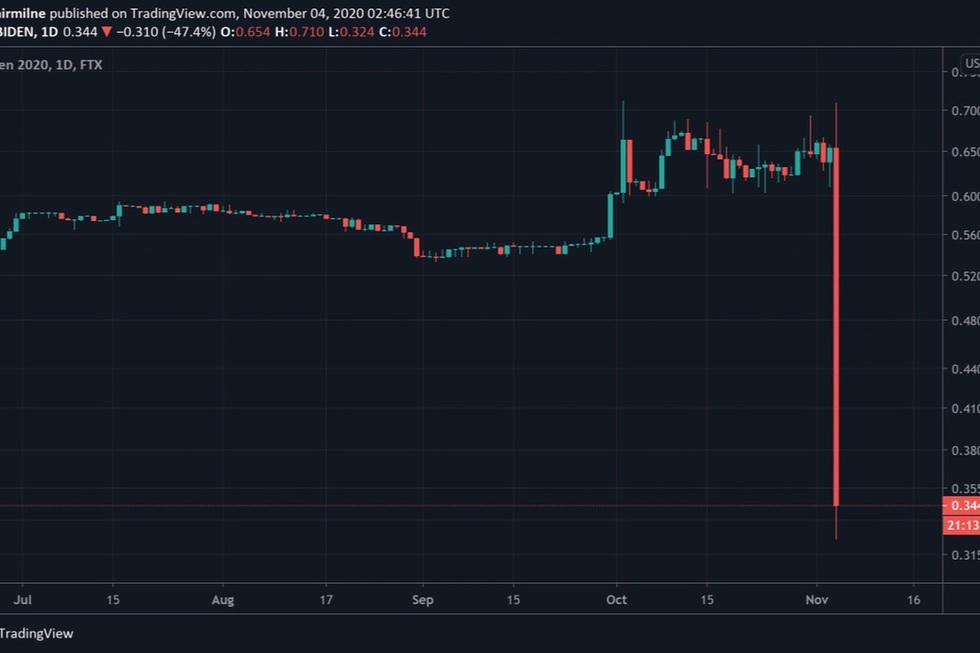
The chart illustrates the “rug pull” phenomenon, where the scammer dumps all the tokens, causing the price to plummet in just a few minutes (Photo: TradingView).
Furthermore, due to the nature of the work related to investigation, all documents and requests from the police must be kept confidential at the highest level. This requires personnel who are not only good at technology but also have experience and absolute trust, making team expansion a big challenge.
Many cybercriminals today use sophisticated tools such as crypto mixers to erase their tracks. How do you counter these tricks?
- "Mixers" are indeed a very popular tool among hackers and scammers. Basically, they work by receiving dirty money from multiple sources, mixing it with other clean money flows, and then paying it out to new wallet addresses, making it almost impossible to trace the origin.
However, "a thick orange peel has sharp nails". We have many methods to neutralize this trick.
First is behavioral pattern analysis, we monitor transaction habits, wallet groups and behavioral patterns when depositing and withdrawing funds from mixers. Sometimes there are suspicious similarities between the subject's input and output behavior, which helps us narrow down the suspects.
Second, the mixers themselves are changing. Some mixers have now, to avoid legal trouble, started collecting some user information, such as IP addresses. When requested by the authorities, we can work with them to get this information.
Third and most importantly, ecosystem cooperation, most of the large and reputable exchanges in the world today have put the wallet addresses of famous mixers on the "blacklist".
They refuse to accept money from these sources. This forces criminals to use more complex intermediaries to “launder” money before sending it to exchanges. And the more tools they use, the more likely they are to make mistakes and expose their tracks. Every step they take can be an opportunity for us to find a loophole.
From your experience tracing hundreds of cases, can you sketch a general portrait of digital asset fraud models in Vietnam?
- We will divide scams into two main categories: Purely technological scams and psychological scams combined with technology. Sadly, the latter are the most common and cause the most damage.
The recent cases that the police have repeatedly warned about all follow a common pattern. Fraudsters often create a very flashy cover, using trendy terms such as Web3 (blockchain-based network), DeFi (decentralized finance), AI trading bot (software that automates asset transactions such as cryptocurrencies) or high-yield staking... to attract investors, especially those who do not have much knowledge about the market.
The recent Antex case is a typical example of combining many forms. They performed "Rug pull" - creating a token, using marketing tricks, hiring KOLs (influencers) to promote and push the price sky high.
When a large number of investors poured money in, they suddenly "dumped" all the tokens they held onto the market and withdrew all liquidity (valuable assets such as USDT, ETH, BNB). As a result, the token price plummeted to near zero, while investors were left holding worthless digital assets.
Along with that is the psychological trick of committing to an unimaginable interest rate, for example 10-15%/month. They can pay interest regularly in the first 1-2 months to create trust, in fact, they take money from later people to pay the previous people. Once they have mobilized a large enough amount of capital, they will disappear.
So how can the average investor protect themselves in such a maze of scams? What are the warning signs they should pay special attention to?
- Our research team has analyzed hundreds of scam projects and concluded 5 early warning signs. We believe that if investors are vigilant and stay away from any project that has one of these five signs:
Unusually high interest rates: Any project that promises stable returns of over 15% per year should be questioned. 10-15% per month is almost a scam. No legitimate investment model can generate such unrealistic returns.
Project information is too little or only in Vietnamese: Reputable projects often have an international community. If you search for information about a project advertised as a "blockbuster" but on Google or Twitter there is only information in Vietnamese, no international news sites report it, no major investment funds confirm it, then that is a very suspicious sign.
Invest in areas you don't understand: When someone offers you to invest in "layer-1", "memecoin", "AI", "Web3"... without really understanding what it is and how it works, be cautious. Scammers often take advantage of the complexity of technology to make investors "FOMO" (fear of missing out).

Projects promoted by individuals with a history of pyramid schemes: Check the background of the development team and the people promoting the project. If they have been involved in scams in the past, there is a high chance that this is just “old wine in a new bottle”.
There are other suspicious signs on the technical side: For example, the project's smart contract is not audited by reputable entities or the development team is completely anonymous.
Just one sign is a red flag. If a project has all five elements, it is definitely a trap.
Finally, with the legal corridor for digital assets in Vietnam gradually taking shape, what are your expectations for the future of the market?
- Vietnam's push for digital asset management policies is an extremely positive signal. It is an affirmation that investors will be protected by law, even if only partially at the present time.
This also creates necessary pressure, forcing project owners and developers to change their mindset and prioritize legal compliance if they want to operate long-term and seriously in Vietnam.
For ChainTracer, our vision is to develop it into a more powerful, automated tool. We want to build a "made in Vietnam" platform, specifically for the Vietnamese market.
The goal is to be able to transfer technology and provide training so that the authorities themselves can use this tool for initial tracing, saving time and improving investigation efficiency.
The process of cleaning up the market is a long one. It requires the cooperation of the management agencies, businesses, experts and especially the vigilance and knowledge of each investor.
Thank you very much for this interview!
Summary of the case "Shark Binh and accomplices"
Hanoi City Police have prosecuted and temporarily detained Nguyen Hoa Binh (Shark Binh, Chairman of NextTech Group) and 9 accomplices to investigate the crimes of Fraudulent appropriation of property and Violation of accounting regulations causing serious consequences.
From August to November 2021, this group is accused of issuing and selling 33.2 billion AntEx tokens to about 30,000 investors, earning about 117 billion VND. The money was then manipulated and withdrawn from the project through the NextTech ecosystem.
The investigation agency has frozen assets worth more than VND900 billion, including gold, foreign currency, land certificates and cars. According to PC03, violations in the NextTech ecosystem “may not stop at the two crimes that have been prosecuted”, the case is continuing to expand the investigation.
Source: https://dantri.com.vn/cong-nghe/don-vi-ho-tro-dieu-tra-vu-shark-binh-vo-quyt-day-co-mong-tay-nhon-20251016010558030.htm



![[Photo] General Secretary To Lam attends the 18th Hanoi Party Congress, term 2025-2030](https://vphoto.vietnam.vn/thumb/1200x675/vietnam/resource/IMAGE/2025/10/16/1760581023342_cover-0367-jpg.webp)
![[Photo] Conference of the Government Party Committee Standing Committee and the National Assembly Party Committee Standing Committee on the 10th Session, 15th National Assembly](https://vphoto.vietnam.vn/thumb/1200x675/vietnam/resource/IMAGE/2025/10/15/1760543205375_dsc-7128-jpg.webp)





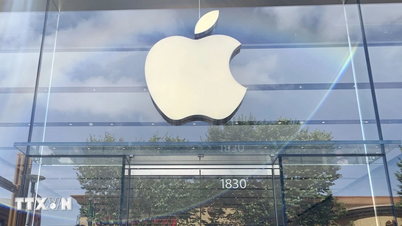


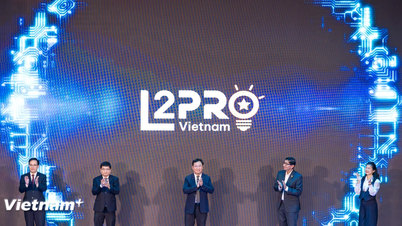

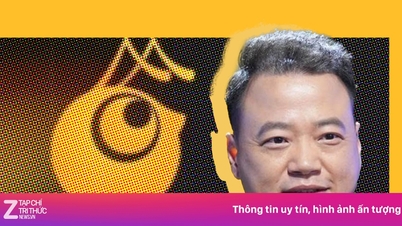














![[Video] TripAdvisor honors many famous attractions of Ninh Binh](https://vphoto.vietnam.vn/thumb/402x226/vietnam/resource/IMAGE/2025/10/16/1760574721908_vinh-danh-ninh-binh-7368-jpg.webp)






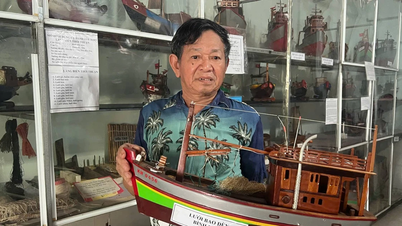




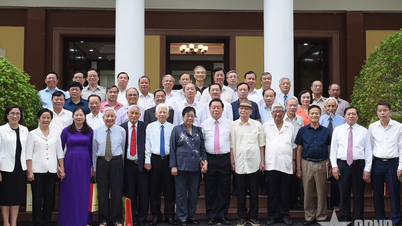



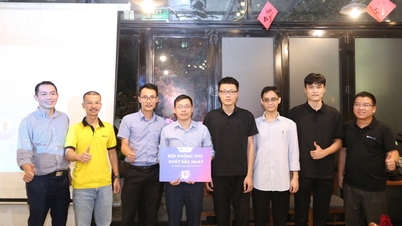


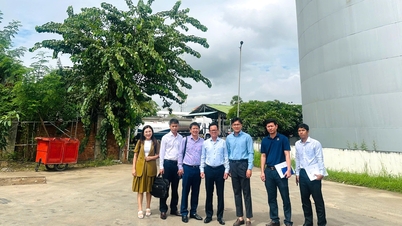
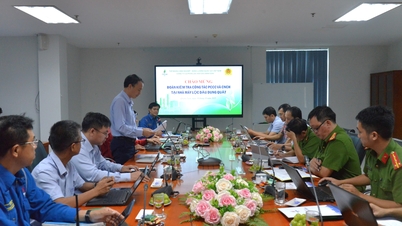








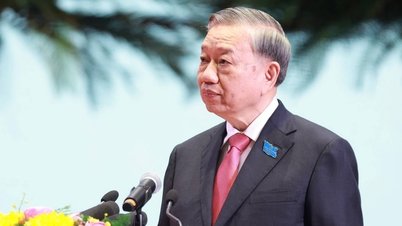



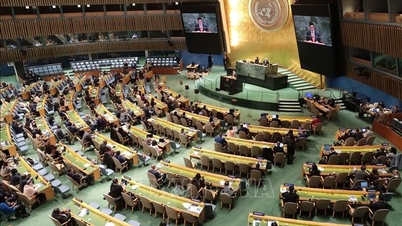





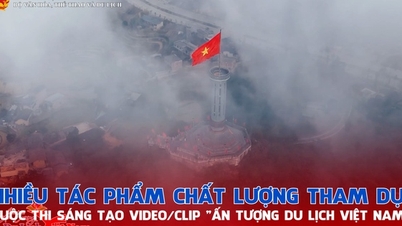




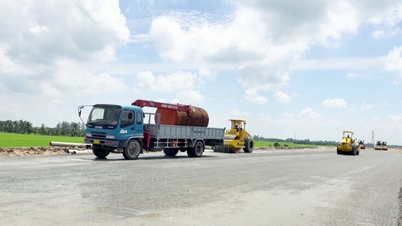

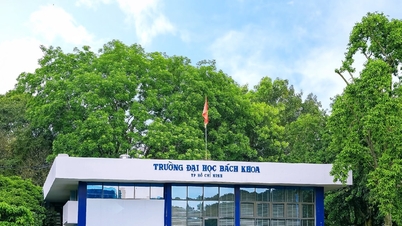






















Comment (0)